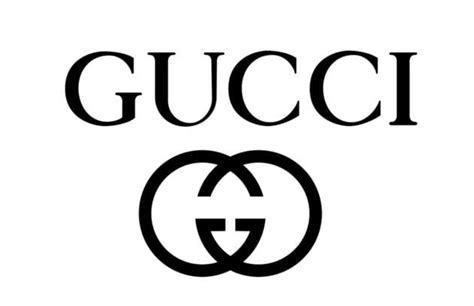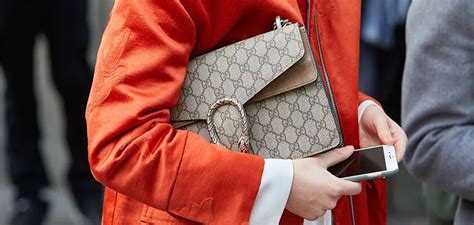gucci growth strategy | Gucci marketing strategy 1980s gucci growth strategy Key takeaways. • Gucci’s strategy to be the hottest brand is to promote inclusivity: appealing to everyone, rather than a specific gender. To that end, the Italian luxury house . We would like to show you a description here but the site won’t allow us.
0 · what makes Gucci so successful
1 · Gucci watch marketing strategy
2 · Gucci sales strategy
3 · Gucci marketing strategy explained
4 · Gucci marketing strategy 2021
5 · Gucci marketing strategy 1980s
6 · Gucci influencer strategy
7 · Gucci company strategy
#124/127 Giratina LV.X. 18 listings from $14.49. Market Price: $36.93. Pokemon SM - Lost Thunder Holo Rare
Gucci’s marketing strategy is to create a sense of exclusivity around their products to appeal to high-end consumers who value luxury and quality. They achieve this through their use of high-end materials, attention to . Key takeaways. • Gucci’s strategy to be the hottest brand is to promote inclusivity: appealing to everyone, rather than a specific gender. To that end, the Italian luxury house . The travel campaign comes as parent company Kering works to reassure investors that Gucci — its most profitable brand and, until 2020, the industry’s fastest-growing company . In this article, we analyze Gucci's luxury product marketing strategy in detail, examining how the brand creates high-quality products, prices them at a premium, distributes .

For Gucci, its digital strategy reflects a brand first, channel second mentality that results in a visually engaging, fully functioning e-commerce store with full product offerings on sale, and a . In 2022, Gucci achieved 41% of the Group’s luxury houses’ overall organic revenue growth, driven by its strong focus on circularity and purpose-driven initiatives . By integrating . The luxury rebound boom continues. Kering on Tuesday reported a double-digit increase in sales across brands, including Gucci, which stumbled in the previous quarter. . Gucci. is a blockbuster success story. With annual growth rates close to 50 percent, surpassing €6 billion in sales for the first time in 2017 — the Florentine house continues to drive parent-company Kering's record-breaking .
Gucci’s marketing strategy is a testament to the power of creativity, innovation, and authenticity. For marketing professionals, there are several key takeaways from Gucci’s success: Balancing Heritage and . Let's find out how the heritage Italian brand, Gucci, employed four marketing strategies to eventually become millenials' favorite luxury brand. Gucci’s marketing strategy is to create a sense of exclusivity around their products to appeal to high-end consumers who value luxury and quality. They achieve this through their use of high-end materials, attention to detail, and signature design elements, such . Key takeaways. • Gucci’s strategy to be the hottest brand is to promote inclusivity: appealing to everyone, rather than a specific gender. To that end, the Italian luxury house offers its customers more ready-to-wear to best capitalize on fashion trends.
what makes Gucci so successful
The travel campaign comes as parent company Kering works to reassure investors that Gucci — its most profitable brand and, until 2020, the industry’s fastest-growing company — is making progress on a broader strategic push to appear more luxurious and timeless.
In this article, we analyze Gucci's luxury product marketing strategy in detail, examining how the brand creates high-quality products, prices them at a premium, distributes them through upscale retail stores and websites, and promotes them through innovative and creative marketing campaigns.For Gucci, its digital strategy reflects a brand first, channel second mentality that results in a visually engaging, fully functioning e-commerce store with full product offerings on sale, and a social media strategy that does what it needs to do without overreaching.
In 2022, Gucci achieved 41% of the Group’s luxury houses’ overall organic revenue growth, driven by its strong focus on circularity and purpose-driven initiatives . By integrating sustainability into its brand strategy, Gucci has not only aligned itself with evolving consumer values but has also positioned itself as a leader in sustainable . The luxury rebound boom continues. Kering on Tuesday reported a double-digit increase in sales across brands, including Gucci, which stumbled in the previous quarter. Gucci sales were up 24.6 per cent for the first quarter of 2021 over the year prior. Gucci. is a blockbuster success story. With annual growth rates close to 50 percent, surpassing €6 billion in sales for the first time in 2017 — the Florentine house continues to drive parent-company Kering's record-breaking financial results. Gucci’s marketing strategy is a testament to the power of creativity, innovation, and authenticity. For marketing professionals, there are several key takeaways from Gucci’s success: Balancing Heritage and Innovation : Embrace your brand’s history .
Gucci watch marketing strategy
Let's find out how the heritage Italian brand, Gucci, employed four marketing strategies to eventually become millenials' favorite luxury brand.
Gucci’s marketing strategy is to create a sense of exclusivity around their products to appeal to high-end consumers who value luxury and quality. They achieve this through their use of high-end materials, attention to detail, and signature design elements, such . Key takeaways. • Gucci’s strategy to be the hottest brand is to promote inclusivity: appealing to everyone, rather than a specific gender. To that end, the Italian luxury house offers its customers more ready-to-wear to best capitalize on fashion trends.
chrome hearts and rolex
The travel campaign comes as parent company Kering works to reassure investors that Gucci — its most profitable brand and, until 2020, the industry’s fastest-growing company — is making progress on a broader strategic push to appear more luxurious and timeless. In this article, we analyze Gucci's luxury product marketing strategy in detail, examining how the brand creates high-quality products, prices them at a premium, distributes them through upscale retail stores and websites, and promotes them through innovative and creative marketing campaigns.
For Gucci, its digital strategy reflects a brand first, channel second mentality that results in a visually engaging, fully functioning e-commerce store with full product offerings on sale, and a social media strategy that does what it needs to do without overreaching. In 2022, Gucci achieved 41% of the Group’s luxury houses’ overall organic revenue growth, driven by its strong focus on circularity and purpose-driven initiatives . By integrating sustainability into its brand strategy, Gucci has not only aligned itself with evolving consumer values but has also positioned itself as a leader in sustainable . The luxury rebound boom continues. Kering on Tuesday reported a double-digit increase in sales across brands, including Gucci, which stumbled in the previous quarter. Gucci sales were up 24.6 per cent for the first quarter of 2021 over the year prior.
Gucci. is a blockbuster success story. With annual growth rates close to 50 percent, surpassing €6 billion in sales for the first time in 2017 — the Florentine house continues to drive parent-company Kering's record-breaking financial results.
Gucci sales strategy
Gucci marketing strategy explained
Gucci marketing strategy 2021
Gucci marketing strategy 1980s

First, tap space to start a wallclimb. Quickly turn away from the wall and tap space again (make sure that you're still facing straight up). The less time between the two jumps, the higher you will go. If you are using debug mode, the amount of milliseconds between the 2 jumps will be shown as a green number (it may be shown as a red number if .
gucci growth strategy|Gucci marketing strategy 1980s

























